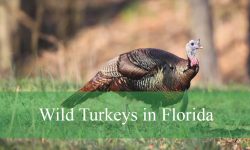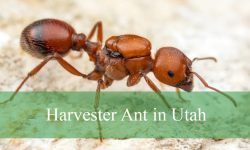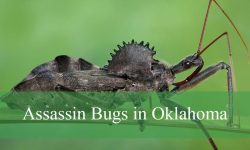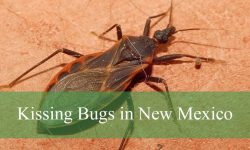Puss caterpillars, widely recognized as asp caterpillars, appear soft and harmless at first glance but are actually some of the most venomous insects in Texas. With their soft, furry appearance resembling miniature kittens, these caterpillars seem harmless at first glance. Yet beneath their silky exterior lies a powerful defensive system composed of venomous spines capable of causing intense pain, swelling, nausea, and even systemic reactions.
Texas is home to some of the highest concentrations of puss caterpillars due to the state’s warm climate, abundant host trees, and long growing season. Their venomous nature has fascinated entomologists for decades, not only because of the severity of their stings but also because of the complex evolutionary pressures that shaped them. Why would such a small and delicate insect evolve such potent toxins? What ecological forces make venom so essential for their survival in Texas?
This article uncovers the biological, ecological, and behavioral reasons behind the extreme venomousness of puss caterpillars in Texas, exploring their hidden adaptations, interactions with predators, and the chemistry that makes their sting so infamous.
Understanding the Puss Caterpillar in Texas

Their Furry Appearance Hides a Serious Defense System
Puss caterpillars (Megalopyge opercularis) are covered with dense, silky hairs that conceal rows of venomous spines along their body. These spines act like tiny syringes: when touched, they break through human skin and release toxins.
The deceptive softness of their appearance is a classic example of evolutionary misdirection. Many predators avoid spiky or brightly colored caterpillars, but puss caterpillars use the opposite strategy—looking harmless while hiding powerful defenses underneath.
This combination of camouflage and toxicity makes them highly successful in Texas ecosystems.
Texas Provides Ideal Habitat Conditions
Texas has the long, warm seasons that puss caterpillars require for development. Oaks, pecans, elms, citrus trees, and ornamental shrubs serve as abundant food sources.
Humidity, mild winters, and high vegetative diversity allow them to survive year-round in some regions. This climate stability enhances the number of generations per year, which in turn increases sting encounters.
Their presence is especially common in Central, East, and Southern Texas, where vegetation density supports large populations.
Their Lifecycle Encourages Human Encounters
The peak season for puss caterpillars in Texas stretches from late summer through fall. During this time, caterpillars drop from trees, wander in search of pupation sites, or fall onto outdoor furniture, patios, and walkways.
This life stage mobility increases the likelihood of accidental contact with humans or pets. Because the caterpillars do not actively attack but sting only when touched, these encounters often surprise people.
Their lifecycle therefore plays a major role in why venom exposure is so common in Texas.
Why Puss Caterpillars Carry Such Potent Venom
Venom Acts as a Primary Survival Strategy
Unlike some caterpillars that use toxic pigments or foul odors to deter predators, puss caterpillars rely on concealed venom as their primary form of defense.
Their soft hair creates a false sense of safety. When predators such as birds, lizards, and mammals attempt to bite them, the venomous spines embed into the predator’s mouth or skin, delivering painful toxins.
This defense mechanism is effective even against larger predators that would normally consume caterpillars easily.
Texas Predators Drive Venom Evolution
Texas ecosystems contain numerous insectivores—birds, mammals, reptiles, spiders, and predatory insects. Continuous predation pressure forces caterpillars to evolve defenses strong enough to discourage repeated attacks.
Puss caterpillars with stronger venom survive predation more successfully, pass their genes on, and help shape venom potency across generations.
This natural selection explains why Texas populations are particularly venomous.
Their Venom Must Protect Them Through a Vulnerable Stage
Because puss caterpillars grow slowly and remain exposed on leaves or branches for long periods, they require strong defenses. They cannot hide under bark like some species, nor do they blend perfectly into foliage.
As a result, they evolved an aggressive chemical shield—one so intense that even a light brush from a passing human can cause severe medical symptoms.
The venom protects them during their most vulnerable developmental stage.
The Biological Structure of Their Venomous Spines
Beneath the “Fur” Lies a Dense Network of Toxic Spicules
The soft fur of a puss caterpillar is composed of long, hollow hairs that appear harmless. Beneath them lies a layer of rigid spines equipped with tiny barbs.
These barbs break off easily when touched. Even minimal pressure triggers a release of venom stored inside them.
This engineering ensures maximum venom delivery with minimal effort.
Spines Are Designed to Break on Contact
Puss caterpillar spines are extremely fragile by design. When disturbed, they snap instantly, embedding themselves into skin. The more the victim tries to remove them, the deeper they lodge.
This mechanism increases venom exposure dramatically compared with stinging insects that require intentional attacks.
The fragility of the spines turns accidental encounters into effective defensive events.
Multiple Spine Layers Ensure Strong Protection
Each caterpillar contains hundreds of venomous spines arranged in rows. Even if some spines are broken or damaged, other layers remain functional.
This redundancy means predators rarely escape a sting without consequences.
Layers of spines create one of the most robust chemical defenses found in caterpillars worldwide.
Chemistry of the Venom: Why the Sting Hurts So Much
The Venom Contains Complex Hemolytic Compounds
Puss caterpillar venom includes enzymes that break down red blood cells and proteins in the skin. These hemolytic compounds cause rapid inflammation, intense burning, and tissue damage.
The biochemical action begins within seconds, often resulting in delayed waves of pain that intensify over time.
The venom’s strength rivals that of venomous ants and some wasps found in Texas.
Neurotoxins Trigger Systemic Symptoms
In addition to hemolytic agents, puss caterpillar venom contains neuroactive substances that affect nerve signaling. These compounds can cause:
-
Headaches
-
Muscle spasms
-
Nausea
-
Chills
-
Sweating
-
General malaise
Severe stings may require medical attention, especially in children, pets, or individuals with allergies.
This neurotoxic complexity helps explain the venom’s unexpected intensity.
Inflammatory Agents Prolong Pain and Swelling
The venom promotes histamine release, leading to redness, swelling, itching, and blistering. These inflammatory reactions can persist for days.
Some victims report radiating pain similar to electric shocks or bone-deep throbbing.
This prolonged discomfort discourages predators from ever attempting to eat puss caterpillars again.
How Puss Caterpillars Use Their Venom in Texas Ecosystems
Defense Against Birds
Birds are among the most common predators of caterpillars. In Texas, species such as blue jays, grackles, wrens, and warblers frequently hunt insects.
However, birds that attempt to eat a puss caterpillar often experience painful stings inside their beaks. This memory-based learning ensures they avoid the species afterward.
Bird avoidance provides strong evolutionary reinforcement for venom potency.
Protection From Reptiles and Amphibians
Texas is home to numerous lizards, small snakes, and frogs that feed on insects. These predators rely on quick strikes and swallowing prey whole.
The venomous spines on puss caterpillars deter these predators effectively. Spines can lodge in mouth tissue, triggering immediate pain and rejection.
This protects caterpillars from a major class of predators.
Deterrence Against Mammalian Predators
Small mammals—raccoons, skunks, opossums, and rodents—often search for soft-bodied insects. Puss caterpillar venom provides powerful deterrence.
Mammals quickly learn to avoid anything resembling the caterpillar’s furry shape, further increasing their survival.
This mammalian avoidance behavior helps explain the continued success of the species.
Why Texas Has More Encounters Than Other States
Long Growing Seasons Increase Caterpillar Populations
Texas has one of the longest warm seasons in the U.S. This extended period allows multiple generations of puss caterpillars to develop each year.
More generations mean more caterpillars—and more venom exposure incidents.
Regions near the Gulf Coast experience the highest yearly densities.
Residential Landscaping Attracts Them
Southern landscaping often includes oak, pecan, citrus, and ornamental trees—prime feeding grounds for puss caterpillars.
Because these trees grow near homes, caterpillars fall onto porches, patios, and sidewalks, increasing the risk of accidental contact.
Human-created environments unintentionally boost caterpillar populations.
Mild Winters Increase Overwinter Survival
Texas winters are mild compared with northern states. Puss caterpillar pupae survive winter easily by sheltering inside cocoons hidden in bark, leaf litter, or home structures.
This high survival rate contributes to recurring population booms in early fall.
Texas’ climate makes venom evolution more beneficial than in harsher northern regions.
Behavioral Adaptations That Support Venom Usage
Slow Movement Increases Dependency on Venom
Puss caterpillars are slow-moving and non-aggressive. They cannot sprint away or jump like some insects.
Because they are physically vulnerable, venom becomes their primary—and often only—line of defense.
Without venom, they would be easy prey for nearly every predator in Texas.
Their Solitary Nature Limits Cooperative Defense
Unlike caterpillars that gather in groups, puss caterpillars live alone. They cannot rely on group protection or collective warning systems.
This solitude increases the importance of a strong personal defense system.
Venom compensates for the lack of social protection.
Their Quiet Feeding Habits Reduce Escape Opportunities
Puss caterpillars feed quietly on leaves, often remaining still for long periods. While this behavior helps conserve energy, it puts them at risk of being spotted.
Their only reliable protection during these quiet moments is the hidden venom.
Human–Caterpillar Interactions in Texas
Accidental Contact Is the Primary Cause of Stings
Puss caterpillars do not attack. Nearly all stings occur when someone touches them unknowingly—often when they fall onto clothing, sit on patio furniture, or cling to outdoor walls.
The spines penetrate instantly, delivering venom before the person realizes what happened.
This element of surprise contributes to their dangerous reputation.
Outdoor Workers Face Higher Risk
Landscapers, gardeners, tree trimmers, and outdoor technicians encounter puss caterpillars frequently. Their work brings them into close contact with host trees.
Protective clothing and awareness are essential during peak caterpillar seasons.
Children and Pets Are Especially Vulnerable
Kids exploring outdoors may pick up caterpillars, while pets may investigate them out of curiosity.
Because children have thinner skin and are more likely to touch them directly, they experience stronger reactions.
Pets can experience swelling of the mouth or paw if they step on or lick a caterpillar.
FAQs About Puss Caterpillars in Texas
How venomous are puss caterpillars?
They are considered the most venomous caterpillars in North America, capable of causing intense pain and systemic symptoms.
What happens if you touch one?
The spines embed in your skin, releasing venom that causes immediate burning, swelling, and sometimes nausea or muscle spasms.
Where are puss caterpillars most common in Texas?
They are frequent in Central, South, and East Texas, especially around oak and ornamental trees.
Do they bite or sting?
They do not bite. The “sting” comes from venomous spines beneath their fur.
Are puss caterpillar stings deadly?
Deaths are extremely rare, but severe reactions can occur, especially in children or allergic individuals.
How can I avoid them?
Be cautious around trees in late summer and fall, shake outdoor furniture, and wear gloves while gardening.
Do puss caterpillars turn into moths?
Yes. They metamorphose into flannel moths, which are harmless.
Are pets at risk?
Yes, pets can experience painful swelling if stung.
Conclusion
Puss caterpillars in Texas are so venomous because their environment demands powerful defenses. Hidden beneath their soft, furry exterior lies one of the most sophisticated chemical protection systems in the insect world. Their venom evolved to deter birds, mammals, reptiles, and other predators that are abundant across Texas’ ecosystems. Combined with their slow movement, solitary lifestyle, and exposed feeding habits, potent venom became the key to their survival.
As climate and vegetation continue to support their population growth, understanding their biology and seasonal behavior becomes essential for avoiding painful encounters. These caterpillars are a remarkable example of how even the softest-looking creatures can carry some of nature’s most formidable defenses.






